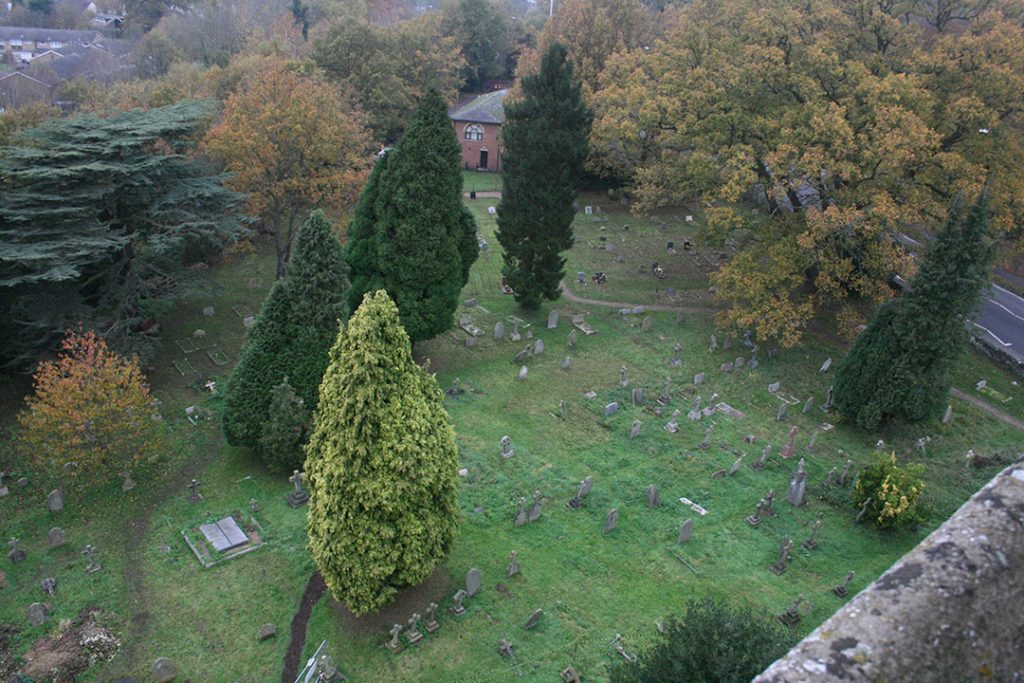Churchyard History

St Paul’s Parish Church and its associated churchyard were created in the west end of Wokingham by John Walter III. He purchased the land and built the church at his own expense.
On September 2nd 1862 Mrs. John Walter laid the foundation stone and Bishop Samuel Wilberforce consecrated the church on July 23rd 1864. During construction the Parish of St. Paul was defined and constituted on July 27th 1863.
The larger part of the churchyard dates from this period, the first grave being dug in 1864. It was extended at the west end adjacent to the Parish Rooms during middle of the 20th Century. The churchyard’s prime purpose is to provide a place for the reverent disposal of the mortal remains of the parishioners (whether they be churchgoers or not). St Paul’s churchyard is still used for burials. It forms a large piece of accessible and well laid out land in the middle of Wokingham. It is enjoyed by many locals, not only those associated directly with the church. A well-used public footpath runs through it, from the Lych Gate to the railway footbridge.
We aim to keep the area looking beautiful with easy access to all parts. Our churchyard has been managed over the years with an interest in making the churchyard wildlife friendly and this concern continues. Although the emphasis is on keeping most of the grass short, at some times the grass has been left to grow round some of the apparently untended graves and patches of nettles have been tolerated to encourage butterflies. This has not proved entirely acceptable as graves were rendered less accessible and therefore more likely to remain untended. More recently an alternative approach has been used, keeping the grass relatively well cut during the autumn and winter but allowing flowers and grasses to grow in spring and summer. In some areas wild flowers have been planted. Plans are being made for the replacement of mature trees as they reach the end of their natural lives.
It is a policy of the Diocese of Oxford (and therefore of this churchyard) that flowers left on graves should be real flowers, which will be removed in due course as part of the normal maintenance of the churchyard. We do not encourage the unplanned planting of small trees, since these may grow too large and are often inappropriately located. They may disrupt the graves and the associated stones. It is also not appropriate to use artificial flowers. Inappropriate grave adornments are likely to be removed.
The Churchyard is managed by volunteers, with invaluable assistance from Community Payback workers of the Berkshire Probation Service. We also benefit from advice given by local organisations and wildlife experts.
